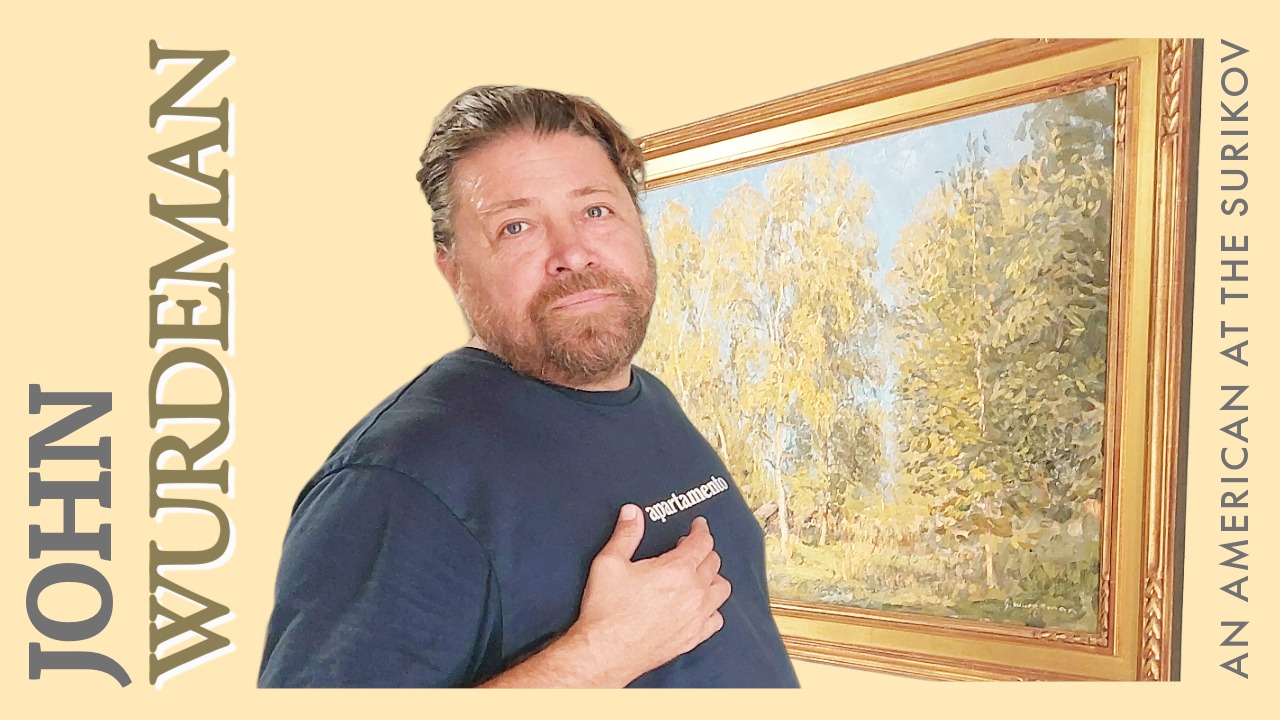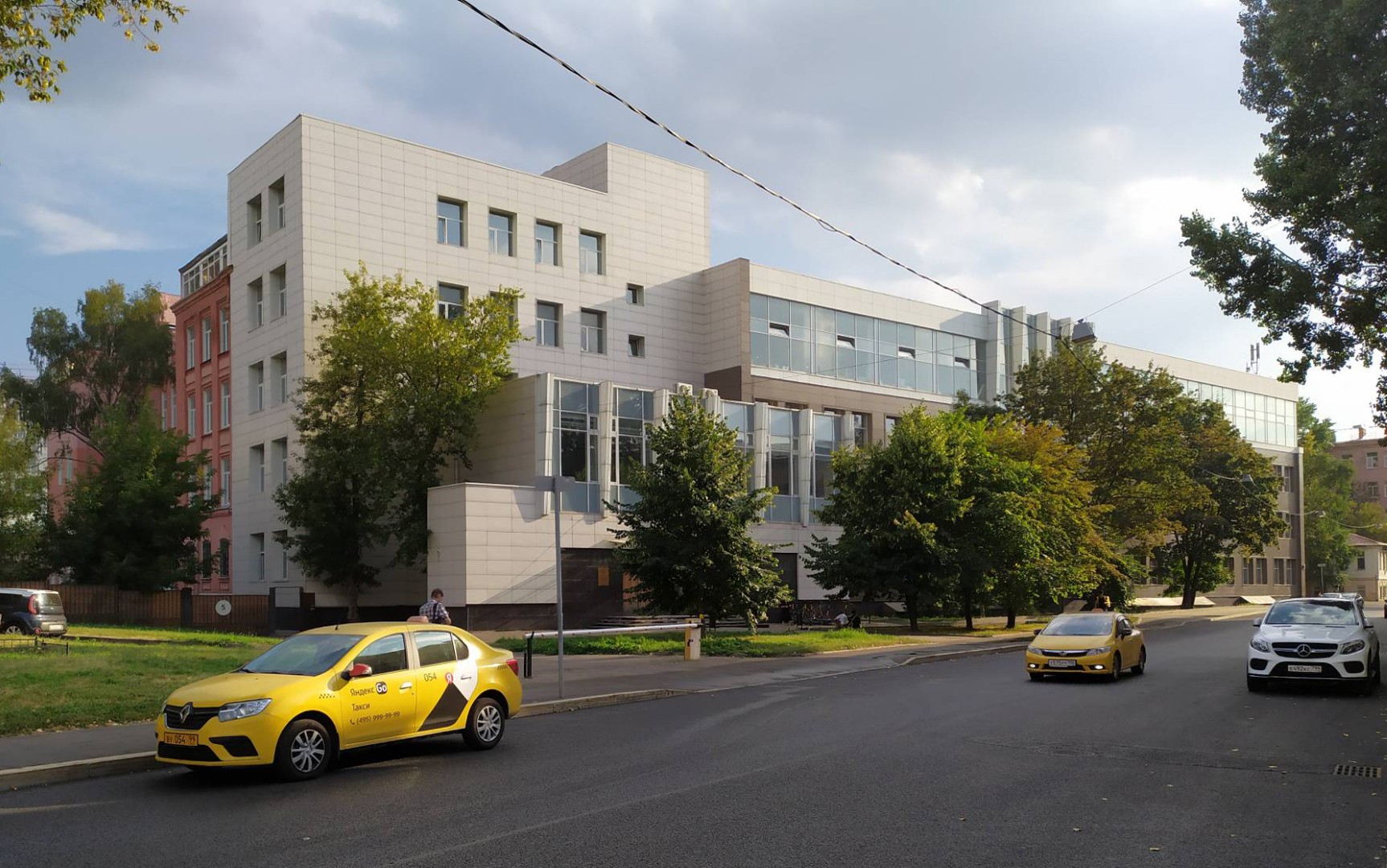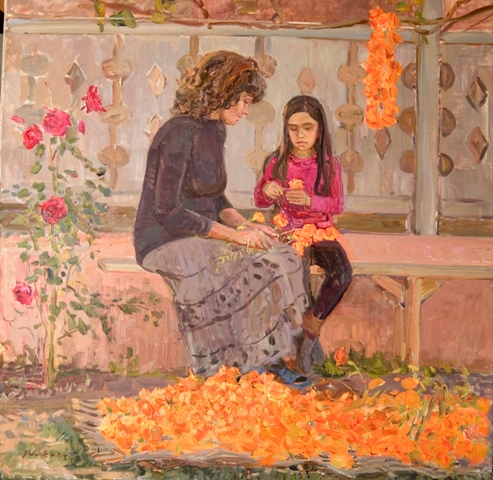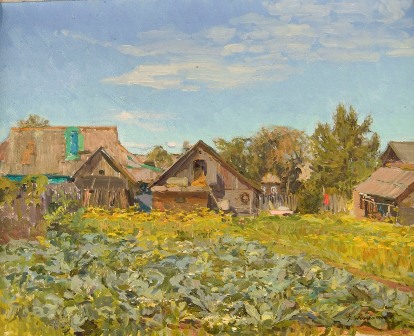John Wurdeman: An American at the Surikov

Lazare Gallery and the artistic journey of John Wurdeman go hand-in-hand. We’ve already discussed how he inspired his parents to open the gallery in Virginia. But here we are focused more on John’s own personal story as an artist.
I met John at his wine bar, The Warehouse, located in the courtyard of Stamba in Tbilisi. The Stamba itself has an interesting heritage: built from a Soviet-period printing house, it had been run down for nearly a decade until restored into a beautiful, modern design hotel. John immediately showed me around the winebar, giving me a deep explanation of the various natural wines he had in stock, both from Georgia and abroad.
Despite being trained at the Surikov, Georgia has always had the first rank in John’s heart. While studying art, he spent much of his time in Georgia, working on his thesis and portfolio while enjoying Georgia’s deep traditions of feasting, cuisine, and winemaking. He moved here full-time after finishing at the Surikov, where he expanded his world into not only being a master painter but also a world-class vintner and restaurateur.
Key Takeaways
- John Wurdeman's Multifaceted Career: John Wurdeman is an American artist, winemaker, and restaurateur based in the country of Georgia. He is the co-founder of the award-winning Pheasant's Tears winery and the primary artistic advisor for Lazare Gallery.
- A Critique of Western Art Education: Early in his career, Wurdeman felt that American art schools prioritized conceptual trends over the foundational skills of drawing and painting from life, which he sought to master.
- The Surikov Institute: Wurdeman discovered and became the only American to graduate from the Surikov Institute in Moscow, a school that he believes maintains a direct, living lineage to the Old Masters of European realist art.
- A Philosophy of Seeing: Under the mentorship of Vyacheslav Zabelin, Wurdeman learned to "feel color" and "see through" his subjects, using techniques that emphasize vibration, peripheral vision, and capturing the essence rather than just the surface of objects.
- The Origin of Lazare Gallery: Lazare Gallery was founded by Wurdeman's parents as a way to honor his Russian mentors. It has since grown into a world-class collection, with John acting as a key advisor and curator.
A Search for Truth in Form
From his earliest years, art was a native language for John. Guided by an artist mother and sculptor father, his incredible talent was quickly recognized. At the age of sixteen, he entered the Maryland Institute College of Art with a full scholarship, though he quickly became disillusioned.
John’s ambition was to master the foundational skills of the Old Masters—to understand the human form and paint from life—in order to forge his own path. But instead he found a curriculum that he felt favored conceptual trends over the deep, immersive study of craft, a “jack-of-all-trades, master of none” approach that he didn’t find helpful.

Etude Woman with Candle by John Wurdeman
His search for this artistic truth led him to searching through the institute’s library—this was, after all, the years before the Internet Age. He eventually came upon a catalog of drawings from the Surikov Institute in Moscow, which was led by the incredibly skilled Vyacheslav Zabelin.
Here, in the rendered figures, he saw what he was missing from his Western education: a living tradition that carried forward the lineage of Rembrandt and Caravaggio. John was stunned by the “skill and knowledge” on display, which he felt was “far beyond not only any students we had at the Maryland Institute, but even beyond the knowledge of the professors.”
In the West, he saw that a profound knowledge of drawing and painting had been all but lost, replaced by postmodern theory and abstraction. But there it was, in Moscow, the living lineage of realist art he had been searching for.
Forging a Path to a Master
Driven by this discovery, John’s resolve became absolute. He began his quest with a simple call to the Surikov’s admissions department to see how to enter. According to John, they replied: “An American couldn’t possibly be prepared for our illustrious academy. The West had thrown their school of art out the window in the 20s.” This only hardened his determination. He packed his bags and went to Russia, where he spent the summer building up a portfolio.
John’s persistence led to an interview with the painting faculty, carrying a small collection of wet canvases. The building itself where the Surikov was located was nothing spectacular or noteworthy, especially in the late 90s. It had a similar drab, Soviet-feel that was persistent throughout the former empire. But then he went upstairs and entered the room where the faculty was spending their time.
 Surikov Art Institute, Moscow
Surikov Art Institute, Moscow
The room was “filled with pipesmoke, three-piece suits, and extraordinary art lining the walls”, John described. It was a portal to a different world. And there was an empty seat in the middle. John took the seat, determined to wait and be introduced. He was immediately barked at: “Not in the seat of the master!” The master being Vyacheslav Zabelin himself who was approaching.
John bolted up and met the man. He convinced Zabelin to take the paintings and have a look. Zabelin received them, nodded, and disappeared back behind another set of closed doors.
After some time, Zabelin returned and told John that he was accepted to study under him, since it was clear to him that John could “feel color”, an innate quality he believed could not be taught. Yet, with the frankness that John soon realized was Zabelin’s personality, the master also declared: “But you certainly can’t draw worth a darn, so we’re going to have to work a lot harder on that.”

Girl with Marigold Garlands by John Wurdeman
For the next two years, John dedicated himself to the rigorous discipline of figure drawing, earning the respect of his peers and the deep mentorship of Zabelin. This master-disciple relationship became his entry into an unbroken artistic heritage leading back to the Old Masters of Western Europe. And today, John remains the only American to have graduated from the Surikov Institute.
A Philosophy of Creativity
John has always believed that creativity actually thrives within a structured framework, which betrays his deep respect for traditions. He compares it to what he has observed in Georgia, where families create amazing food and wine by improvising on recipes passed down through generations. He notes that even the great Spanish painter Velazquez was given “very specific regulations of what he was supposed to paint”, yet his work shows a “freshness of life… unlike anything ever created before.” For John, having limits forces greater creativity.
At Surikov, he became part of an “unbroken lineage” of artists that stretched back centuries. This tradition had passed down a “culture of seeing, of feeling, of how to merge form and content together”.

Garden in the Village by John Wurdeman
This included learning to see in a new way. Zabelin taught him to feel color, and to “paint the color between the colors” instead of just trying to copy the tint of an object. This meant using two colors side-by-side to create a third, more vibrant color that gives the painting life, “much like with musical notes and overnotes”. John explained that light in a painting comes from the “closeness of values, not the sharpness of contrast”, like the soft “middle of the bread” versus the dark crust.
Zabelin also stressed using peripheral vision to coax out the color in one’s mind rather than looking as something directly. Zabelin told him to “see through rather than look at” his subject. In one lesson, Zabelin asked John why a piece of cloth in his painting was so drab and lifeless. When John finally sensed a “golden hue” in a gray cloth, the master demanded, “Then why were you painting it the color of slate?!” And then he whacked John on the head and said, “Don’t look at what you’re painting; see through it.” It was a lesson in seeing the world as a unified whole, not as separate objects.
A Creative Life and the Birth of a Gallery
After graduating in 1998, John moved full-time to Georgia, where he divides his time between painting, winemaking, and culinary work. He feels these creative pursuits “all kind of feed one another”.
His artistic journey was the direct inspiration for Lazare Gallery. After his graduation, his parents John and Kathy wanted to do something for John’s teachers. They asked what was typically done, and John replied it was normal to offer a bottle of wine or something along these lines. Instead, his parents went a level further: “Why don’t we have an exhibition in New York for them?”

Sacred Ground by John Wurdeman
After the exhibition, the gallery was born, and John became a key advisor and finder for the gallery, using his unique training and connections to help the gallery acquire “the best of the best” from Russia’s top artists. John’s quest for an authentic art education became his parents, allowing them to build what is considered “the most unique collection in the world in private hands” and share its timeless beauty with you.
You can see more of John’s art here and make a purchase using the inquiry form.
Frequently Asked Questions (FAQ)
Who is John Wurdeman?
John Wurdeman is an American painter, winemaker (Pheasant's Tears), and restaurateur living in Georgia. He is the only American to have graduated from the prestigious Surikov Art Institute in Moscow.
What is the Surikov Institute?
The Surikov Moscow State Academy Art Institute is a world-renowned art university in Russia known for its rigorous, traditional curriculum focused on realist drawing and painting, maintaining a lineage from the European Old Masters.
What is Pheasant's Tears Winery?
Pheasant's Tears is an award-winning winery in the country of Georgia, co-founded by John Wurdeman. It is famous for producing natural wines using ancient Georgian winemaking techniques, such as fermenting in clay vessels called qvevri.
What makes Lazare Gallery unique?
Lazare Gallery is unique because of its direct connection to the living tradition of Russian Realism. Its collection was built through the personal relationships and artistic expertise of John Wurdeman, providing access to top-tier artists from a school with a lineage stretching back centuries.

